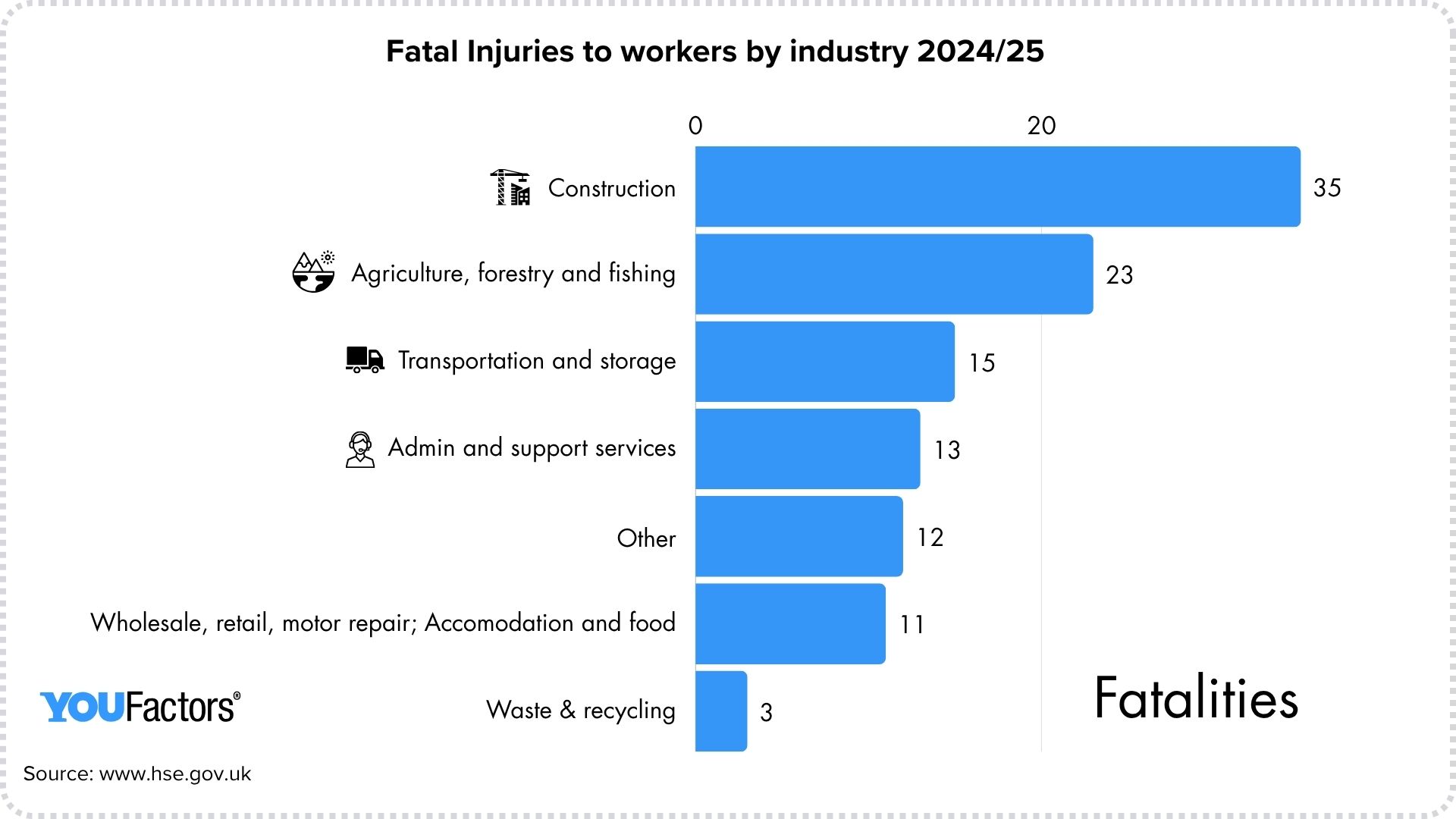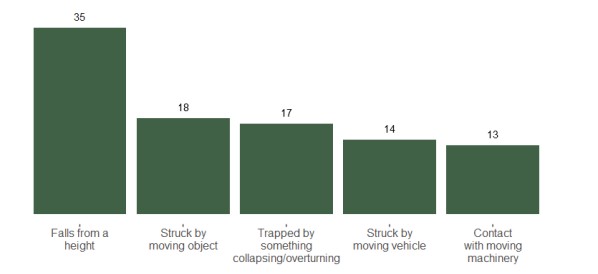Every year, thousands of people go to work and never come back home. The numbers on fatal accidents at work by industry show how serious this problem is.
Each statistic represents a person, a family, a story that ended too soon. Understanding these figures helps us see where risks are highest and where prevention must focus. It’s a reminder that safety is just not optional.
At YOUFactors, we believe every number is a lesson. A reminder that safety habits can save lives.
Discover how YOUFactors helps organisations track and prevent workplace accidents.
The numbers vary by region, but one pattern is clear: the same high-risk industries appear again and again.
Jobs that involve physical labour, heavy equipment, or driving are the most dangerous.
According to the UK Health and Safety Executive, there were 124 worker deaths in 2024/25 (HSE, 2025).

Here’s how they were spread across industries:
Despite improvements in training and awareness, the fatal injury rate has remained “broadly flat” over the past decade. Each of these deaths represents a preventable tragedy.
EU data reveal the same pattern. Across Europe, agriculture, construction, and transport consistently remain the industries with the most deaths (Eurostat, 2024).
These jobs often involve heavy machinery, outdoor conditions, and long hours.
A combination that makes accidents more likely and prevention more complex.
The Bureau of Labor Statistics (BLS) recorded 5,283 fatal work injuries in the United States in 2023 (BLS, 2024).
That equals 3.5 deaths per 100,000 full-time workers.
Here’s the breakdown by industry:

The same industries that build, move, and feed the world continue to carry the highest human cost.
Around the world, far too many people still lose their lives at work.
The International Labour Organization (ILO) estimates that almost 3 million workers die every year from work-related causes.
About 330,000 of those deaths come from accidents that happen directly on the job.
(Source: ILO, 2024)
The risk is not the same everywhere.
In some parts of Asia, fatal injury rates are around 13 deaths per 100,000 workers.
In Europe, that number is closer to 3 per 100,000.
This difference comes from many factors: laws, safety culture, access to training, and equipment standards.
Across most regions, the same industries remain the most dangerous:
These jobs often mean working outdoors, using heavy machinery, or being far from hospitals.
The mix of physical effort, weather, and long hours also makes mistakes more likely.
Some jobs carry much higher risks than others.
In 2023, the US Bureau of Labor Statistics reported:
These are some of the most dangerous jobs in the world.
Workers in these roles face risk every single day.
The most common causes of workplace deaths in the UK were (HSE, 2025):
Behind each number is a life cut short, often by simple lapses in attention or inadequate safety controls.
High-risk jobs often involve long shifts, heavy tools, and fast decisions.
These conditions can make even experienced workers drop their guard.
That’s why YOUFactors habit-building and micro-learning to keep safety behaviours consistent, especially for those in high-risk roles.
The main causes of industrial accidents death are similar across countries:

In the US, transportation incidents alone caused 1,942 deaths in 2023 (BLS, 2024).
Vehicle-related incidents remain the biggest cause of death at work.
Lorries, forklifts, and moving equipment are involved in many tragedies.
Most happen because of human error: a moment of distraction, rushing, or fatigue.
YOUFactors helps reduce these risks by strengthening attention and decision-making on the job.
Prevention saves lives.
Here are some key steps to reduce fatal accidents at work by industry:
When safety becomes habit, fewer lives are lost.
The data show that fatal accidents at work by industry happen most often in construction, agriculture, and transport.
These are the industries that build our infrastructure, feed our nations, and keep goods moving; and yet they face the highest toll.
Reducing these numbers requires more than compliance. It requires care, awareness, and commitment at every level.
Discover how YOUFactors helps reduce human error, build safer habits, and prevent fatal accidents at work: Book a demo with one of safety experts today!
Learn, practice, and build safer habits in minutes with YOUFactors.
 See How it Works ▶️
See How it Works ▶️.avif)